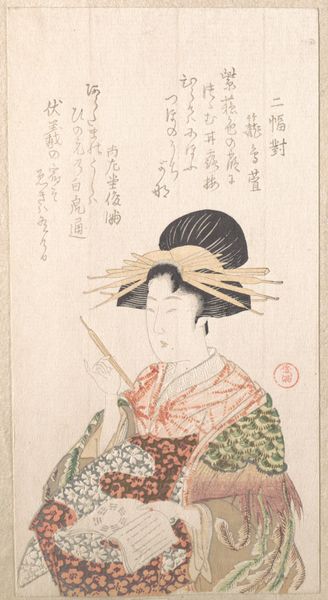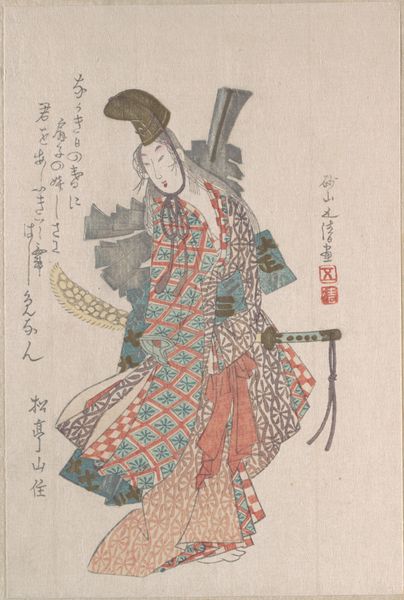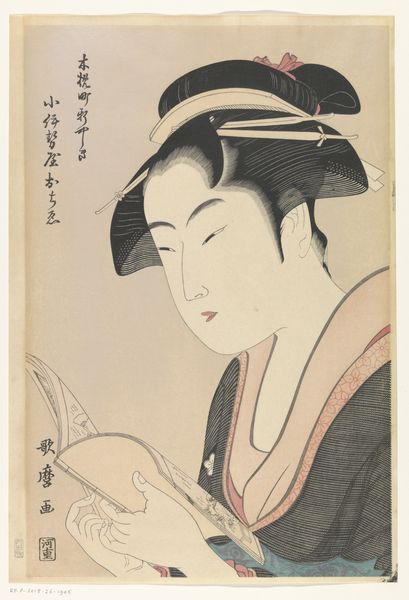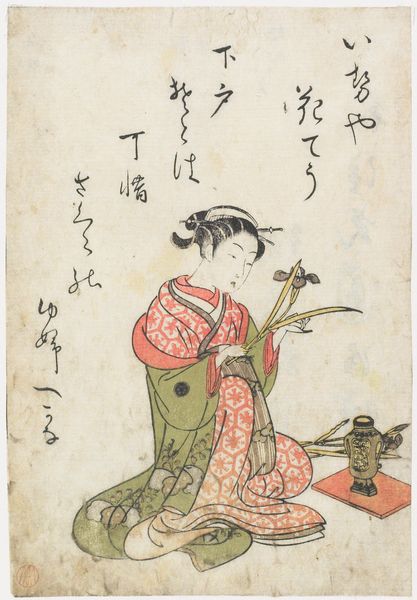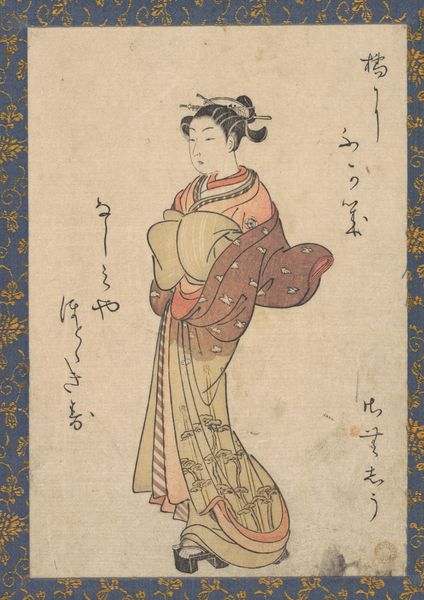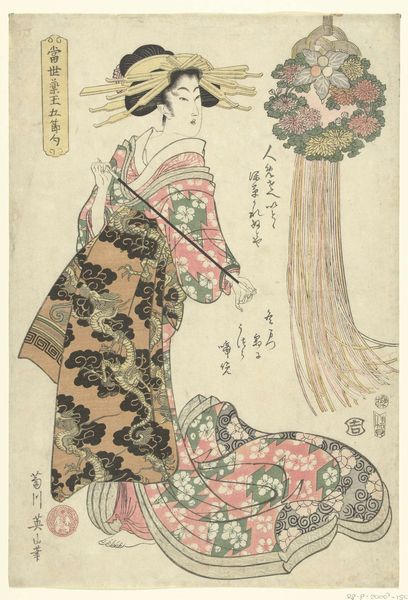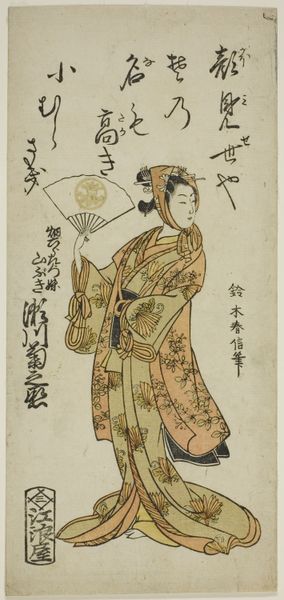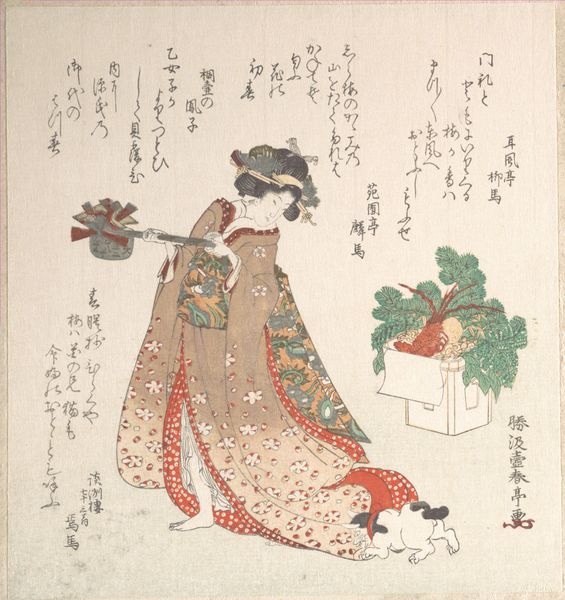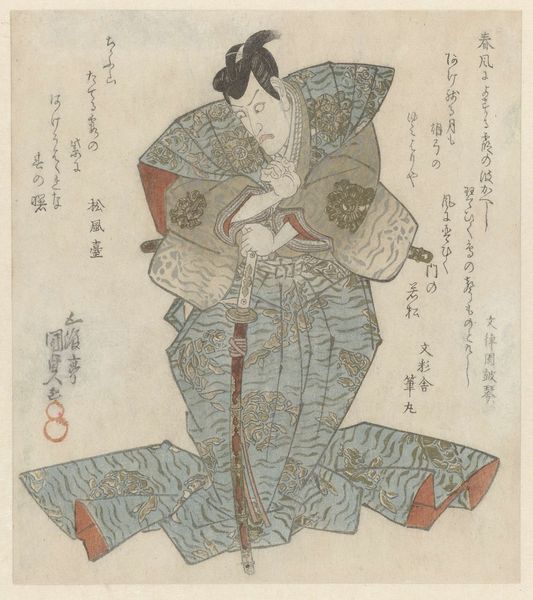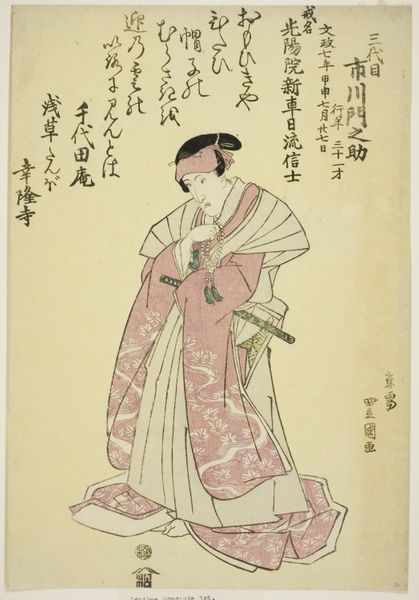
print, woodblock-print
#
portrait
# print
#
asian-art
#
ukiyo-e
#
figuration
#
woodblock-print
Dimensions: 8 1/8 x 4 3/16 in. (20.6 x 10.6 cm)
Copyright: Public Domain
Curator: This is "Courtesan with Branch of Seri" a 19th-century woodblock print by Kubo Shunman, currently held at The Met. I'm always struck by how intimate these prints feel, yet they were part of a booming commercial culture. What are your initial thoughts? Editor: The colors are quite soft, and the figure seems almost serene. I’m intrigued by the inclusion of what looks like text. How do we interpret a piece like this today, especially considering its cultural context and portrayal of women? Curator: That's an excellent question. Ukiyo-e prints, like this one, were immensely popular, reflecting the lives and interests of the urban population. They frequently depicted women in entertainment, often courtesans, shaping and reinforcing specific ideals of beauty and femininity. We should consider how these images functioned within a patriarchal society. How might the artist be commenting on the role of women, or simply participating in their commodification? Editor: So, we have to consider the power dynamics at play – both in the artwork itself, and in the broader societal context. But is there agency in the portrayal, too? Could this be a complex representation of beauty, identity, and social role, not just exploitation? Curator: Absolutely! Feminist interpretations could explore how the courtesan might possess a form of power or independence within her limited sphere. What does her gaze tell us? Does it project a sense of self-possession or something else? And the inclusion of text adds another layer. Is it reinforcing her societal position, or challenging it through the verses? It pushes us to dig deeper. Editor: I see, by analyzing these visual and textual elements, we can unpack the complex relationship between art, gender, and social power within a specific time period. It definitely adds more depth to understanding the artwork. Curator: Precisely! By placing the artwork within a network of social, political, and cultural forces, we develop a more nuanced perspective, moving beyond simple aesthetic appreciation to grapple with the broader implications of art. Editor: This has completely transformed how I view the image – seeing it not just as a beautiful print but as a site of cultural and social commentary.
Comments
No comments
Be the first to comment and join the conversation on the ultimate creative platform.
